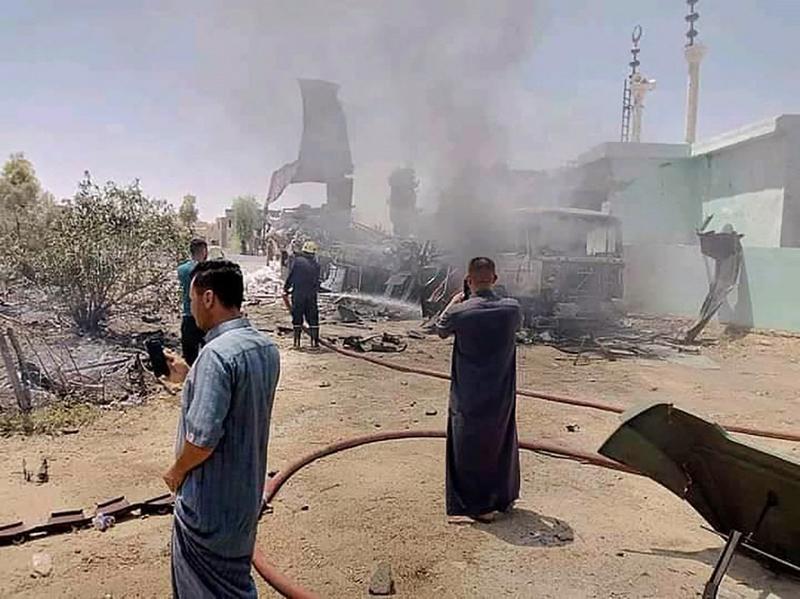
U.S. coalition forces saw an uptick in attacks against their facilities this week, likely due to the January 3 anniversary of a U.S. airstrike that killed Iranian Gen. Qassim Soleimani in Baghdad two years ago. The recent events highlight the critical nature of robust air defenses and the Pentagon’s growing efforts to develop and field new systems to protect ground forces against threats of all shapes and sizes.
On Monday, January 3, two fixed-wing drones laden with explosives were shot down as they were heading towards Baghdad International Airport, where U.S. military advisors are stationed. The following day, another pair of suicide drones was destroyed as they were targeting an Iraqi military facility housing U.S. troops in western Anbar province. Drones like this effectively serve as makeshift cruise missiles, flying directly into their target rather than releasing separate payloads. Nobody claimed responsibility for the drone attacks, but they fit the profile of Iran-backed militias. The proxy groups threatened retaliation following the 2020 attack that killed Soleimani, so the timing also makes sense.
Two more attacks came on Wednesday, January 5, but this time in the form of rockets. One rocket again targeted military forces at the Baghdad airport, but no damage or casualties were reported. Eight rockets were also fired at the Green Village outpost in Syria, after which coalition forces responded with artillery fire. U.S. officials said the rocket attacks in Syria were carried out by Iran proxy forces near Mayadin, Syria. The previous day, coalition forces had preemptively struck several short-range rocket launch sites that were deemed a threat to the Green Village installation.

The Pentagon has been working to bolster its air defense capabilities, particularly against smaller drones. When U.S. forces first entered Iraq and Afghanistan, they were initially unprepared for the widespread use of improvised explosive devices by insurgents. The proliferation of cheap small drones has now taken that IED threat to the air. These armed drones not only pose a threat to forces in the field, but also to military installations and other infrastructure.
Counter-unmanned aerial system capabilities (C-UAS, or C-sUAS when referring to small drones) are now on the rise and coming in many forms, ranging from small handheld jammers that can scramble electronics to larger lasers and kinetic interceptors.
The Air Force and Army have been working together on developing C-UAS lasers that could be used for base defense. One is the High Energy Laser Weapon System (HELWS), which is mounted on a Polaris MRZR all-terrain vehicle. The other is a high-powered microwave system called Phaser. The Air Force Research Laboratory has also developed its own C-UAS weapon, the Tactical High Power Operational Responder (THOR), which also utilizes microwaves. Microwave systems have the ability to target multiple threats at once, meaning they are ideal for countering swarms of drones that could potentially overwhelm laser-based systems that focus on one target at a time.
Last spring, the Army also hosted a C-sUAS demo at Yuma Proving Ground that focused on low-collateral effects interceptors that would minimize collateral damage to nearby personnel or equipment. The systems tested at this event were actually drones themselves equipped with tethers or nets that could be used to disable drone threats. This demo was the first of multiple events that are expected to take place twice a year to examine new solutions for potential fielding.
Most recently, the Marine Corps announced earlier this week that it is looking for information on a C-UAS interceptor that can be used in its Marine Air Defense Integrated System. MADIS is a Joint Light Tactical Vehicle (JLTV) outfitted with weapons to improve the Marine Corps’ Ground Based Air Defense (GBAD) capabilities.